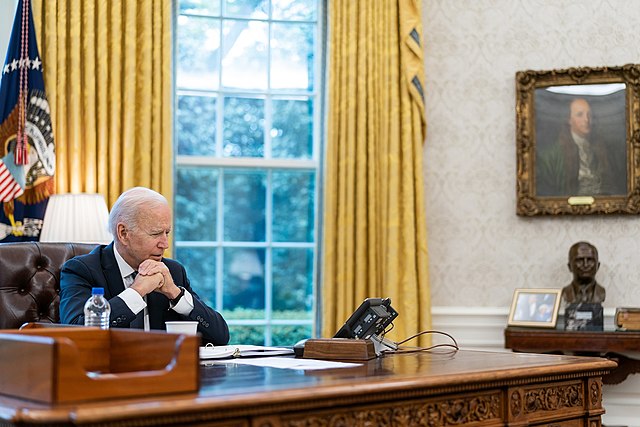
The Taliban Was Always Going to Take Afghanistan, But Biden's Withdrawal Was Still a Disaster
Keaton Weiss | August 21, 2021
In the wake of the United States’ withdrawal from Afghanistan and the subsequent usurpation of the Afghan government by the Taliban, there seem to be two competing widespread opinions. Predictably, the corporate media, essentially an arm of the military industrial complex itself, has been nearly unanimous in its messaging that the turmoil in Afghanistan is a cautionary tale for why America must remain the World Police, and that the Biden administration’s decision to withdraw was a disastrous one.
Ironically, many on the Left are finally praising President Biden for sticking to his guns and defending his decision to pull out of Afghanistan after a 20-year occupation. Kyle Kulinski went as far as to (half seriously) brand himself a “Biden bro,” lauding the withdrawal of troops as “the best thing he ever did.”
What most in both the mainstream and independent media are missing here is that the decision to withdraw, and the manner in which the US went about its execution, are two different issues. Many would scoff at this, as Kyle himself has, and point out that no matter how long we remained in Afghanistan, this outcome was inevitable, and therefore it’s petty to critique the way in which the withdrawal was carried out.
Is he correct? Yes and no. But mostly, no.
He, as is almost everyone on the Left, is undoubtedly correct that the political outcome itself - i.e, the Taliban reclaiming Afghanistan - was a foregone conclusion no matter how the withdrawal was executed. But what wasn’t inevitable was the extraordinary level of chaos that ensued during this “transfer of power.”
Just six weeks ago, Biden expressed confidence that the Afghan army was ready to defend its country, insisting that a Taliban takeover was “not inevitable” (a prediction which directly contradicts his latest statements in which he emphasizes that it was). Had he and his administration been better prepared for this outcome that they now claim was inevitable from the beginning, surely a safer, more orderly evacuation of personnel and equipment would have been prioritized in anticipation for what was certain to unfold.
Instead, we saw horrific images of Afghans clinging to the sides of airplanes and then falling out of the sky from 2,000 feet in the air. We saw traffic jams of desperate people trying to flee at the last minute as the Taliban took over. And now, the Taliban has control over stockpiles of military equipment that we left behind.
So the questions of whether or not we were right to get out, and how do we go about doing so as safely and responsibly as possible, are obviously two different questions, and the latter is just as important as the former. Many have said that to obsess over the execution of the plan without acknowledging the overall merit of the decision to withdraw is to somehow nitpick and split hairs. This is absurd.
When the Seattle Mariners built their beautiful new Stadium, Safeco Field, they decided to demolish the Kingdome, its unsightly and retrograde predecessor; a decision almost everyone agreed was the right one. But if the demolition took place during a game, with 30,000 people inside, then of course it would be apropos to emphasize the extraordinary recklessness and incompetence with which the decision was carried out.
This is common sense. The way in which Biden’s administration went about this withdrawal was obviously a complete disaster that could have and should have been mitigated by ample preparation, if it could not have been avoided entirely. Acknowledging this in no way suggests that the decision to withdraw is itself a bad one.
We discuss the Afghanistan withdrawal and more on episode 118 of the Due Dissidence podcast. Click the player below to hear our full conversation, and subscribe to the Due Dissidence podcast on Apple,Stitcher,Spotify,Castbox, Google Podcasts, or any major podcast player.
Photo: Wikimedia Commons